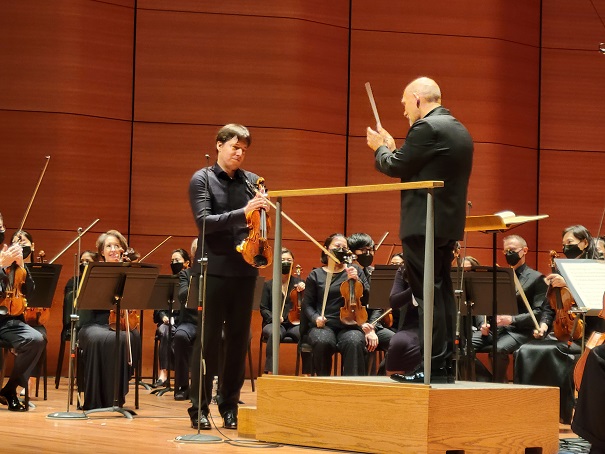Concert Diary: Joshua Bell Performs Beethoven
November 30, 2021
New York, N.Y.
I spent some time with the Beethoven Violin Concerto during my Complete Beethoven Celebration, so it was great to see the work in concert just about 15 months later when the New York Philharmonic performed it on November 24th last week. The conductor was the Philharmonic Music Director Jaap van Zweden, and the violinist was the famous Joshua Bell.
Following the famous timpani taps that begin the Violin Concerto, Beethoven’s orchestra develops a lovely theme, and quickly establishes the orchestra’s power and assured dominance over any individual. It could go much longer without a soloist, but at first tentatively and then with more confidence, the violin establishes its credentials. This is a long journey as the violin and orchestra find ways to work together to explore a vast musical landscape.
The slow movement that follows is a heartbreakingly beautiful dialogue between violin and orchestra that tiptoes until doesn’t, leading into a cadenza from which explodes the finale, in which the violin teaches the orchestra a country dance.
Aside from his technical perfection and flawless performance, one interesting aspect of Joshua Bell’s interpretation of the Beethoven Violin Concerto is that he has wrote his own candenzas, which aren’t nearly as radical as those of Alfred Schnittke, but they do certainly personalize the performance.
Following intermission was a short work by the pioneering Chinese composer Chen Yi, her 1985 Duo Ye for chamber orchestra, an episodic work I found fascinating in both its motifs and orchestration. I wish the orchestra found time to play it twice.
The concert concluded with Stravinsky’s Suite from Pulcinella, which really shouldn’t be as fun as it is. If you encounter this work after becoming familiar with Stravinsky’s early trio of revolutionary ballets — which is how European audiences heard the music — it might not seem like the same composer. The music is based on tunes that were believed at the time to be by the Baroque composer Giovanni Pergolesi. (Some are; some aren’t.) To this music, Stravinsky certainly added some modernist touches and inventive orchestration, but if you have ambivalent feelings about Stravinsky’s turn to neo-classicism following this work — as I do — you might find the music a little too “nice” despite being blessedly enjoyable.
